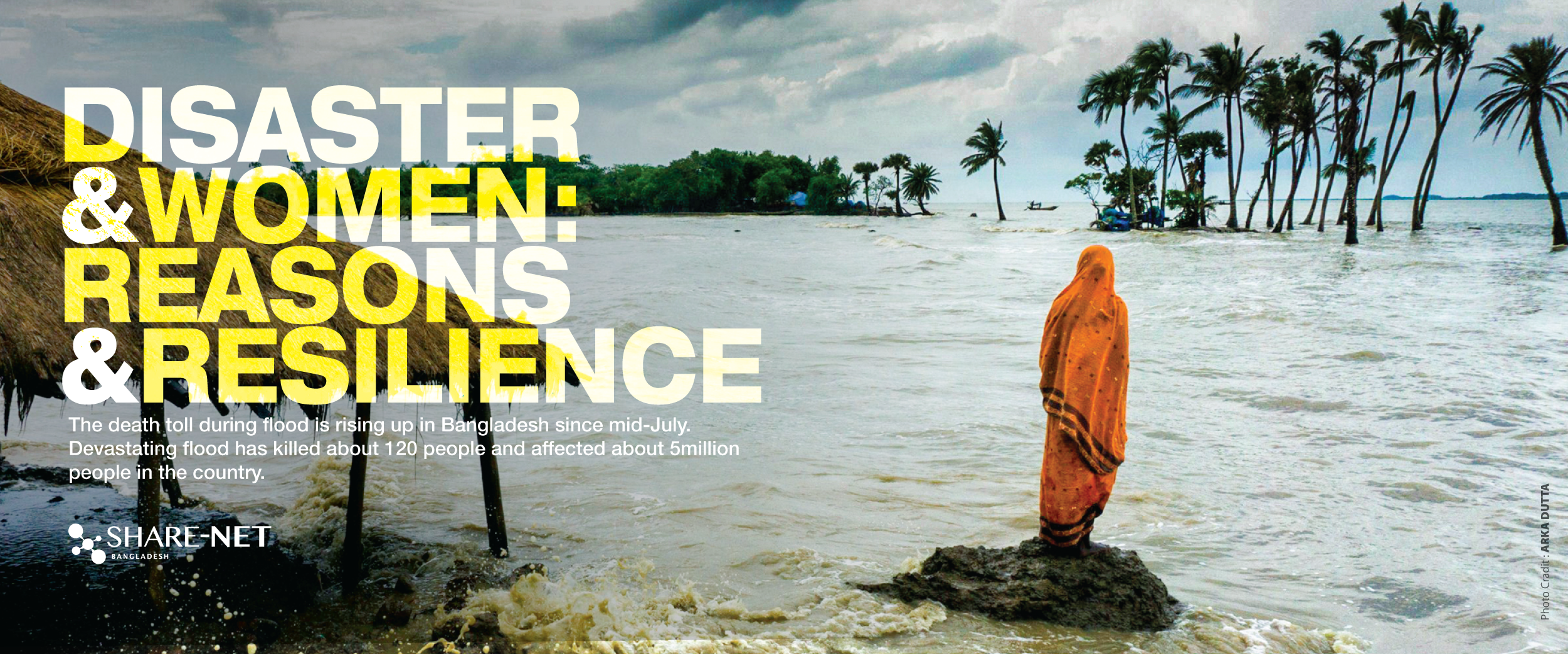Disaster and women: Reasons and Resilience
The death toll during flood is rising up in Bangladesh since mid-July. Devastating flood has killed about 120 people and affected about 5million people in the country.
Bangladesh is very prone to the natural disaster due to its geographical location. This fertile land is situated on Ganges–Brahmaputra delta and irrigated by the Meghna river which made disaster a common phenomenon in the country.
Climate change has a great impact on the lives of the women in Bangladesh. It threatens the gender equality. Gender equality does not mean that men and women are similar rather it means equal value, rights and opportunities should also be for women. Because of social and economic differences, women suffer the most during the natural disaster. According to a study of United Nations Population Fund (UNFPA), the death of women and children is more than men in natural disaster. For example, women died the most in 1991 cyclone.
There are several reasons of women and children death toll during natural disaster. Women stay back at home for being rescued and they do not know how to swim or climb the tree. They are also ignorant about the safety mechanism during disaster.
Women and children’s health are badly impacted during natural calamities. For example, the data for 2000 and 2012 from South-Asia has shown that women died more than men in diarrheal disease. The pregnant and breastfeeding mom suffer from malnutrition because of lack of food. Their menstrual health also become at risk since there is scarcity of water and lack of capacity of changing pads/clothes. The risk of sexual violence of women also rises. Women cannot go too far or move at night to use the washroom. Because of sexual violence many women try to avoid the cyclone centers and decide to stay back at home taking risk of their life.
The root problem of this vulnerability is women are treated as victim rather than as effective decision maker during natural disaster. They need to be recognized as active partners with men while making disaster response or emergency plan. They have to make aware of the planning and warning system. The government and international agencies should address gender issues while distributing relief. For instance, there is insufficient amount of sanitary napkins/ pads supply in natural disaster. Napkins are unavailable and costly to buy. The donors need to provide more fund for women’s reproductive health during disaster. This includes enough facilities and intensive care of the pregnant women, separate and menstrual friendly washrooms in the cyclone centers, etc.
Apart from this, women’s psychological condition gets worse. So, they need to be provided with psychological and counselling support right after the disaster.
Finally, the active participation of women in disaster risk reduction and decision making process should be ensured.
This is the high time to take urgent step to identify the problems of women and make them aware about the disaster management system and create a disaster resilient culture.



